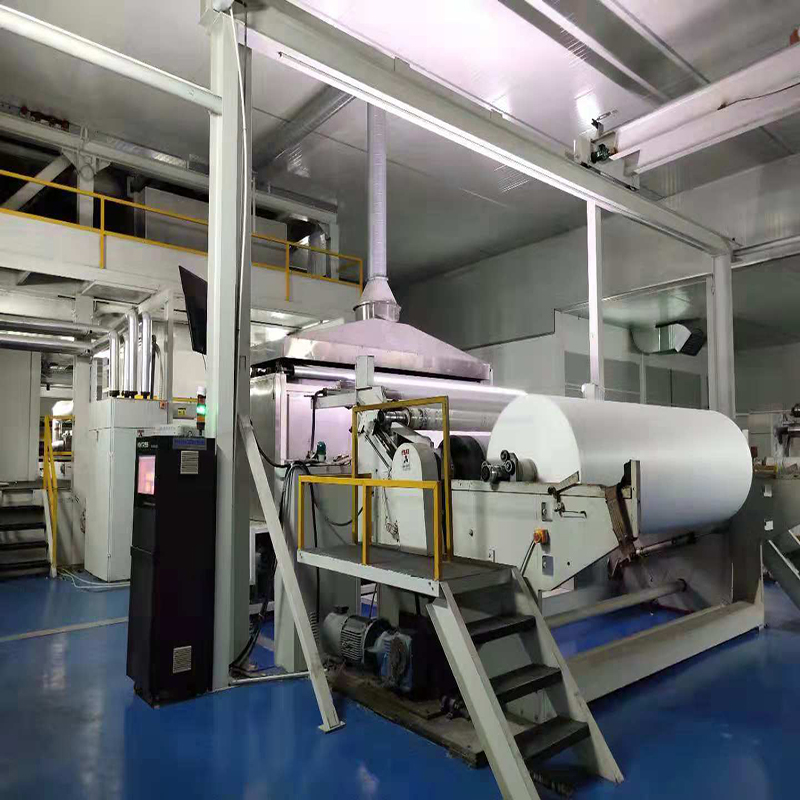The nonwoven industry has witnessed significant growth and innovation in recent years, driven by advancements in nonwoven machinery by China nonwoven machinery manufacturers. Nonwoven fabrics are versatile materials used in various sectors, including automotive, medical, filtración, y productos de higiene.
Increased Efficiency and Productivity

One of the key advancements in nonwoven machinery is the focus on increasing efficiency and productivity in the manufacturing process. Manufacturers have developed innovative solutions to streamline operations and optimize production. Here are some notable advancements:
a. High-Speed Production Lines: Nonwoven machinery now incorporates high-speed production lines that enable faster production rates. These lines feature advanced automation and control systems, minimizing downtime and maximizing output.
b. Improved Material Handling Systems: Efficiencies in material handling have been achieved through the integration of robotic systems and intelligent conveyors. These advancements ensure smooth material flow, reduce manual labor, and enhance overall productivity.
c. Enhanced Process Monitoring: Nonwoven machinery now includes sophisticated process monitoring systems that provide real-time data on variables such as temperature, pressure, and speed. This data allows manufacturers to optimize process parameters, resulting in improved quality and reduced waste.
Advanced Product Quality and Customization
The advancements in nonwoven machinery have also led to significant improvements in product quality and customization capabilities. Manufacturers can now produce nonwoven fabrics with enhanced properties and tailor them to meet specific customer requirements. Here are some notable advancements in this regard:
a. Multilayer and Composite Structures: Nonwoven machinery now enables the production of multilayer and composite nonwoven structures. By combining different materials and bonding techniques, manufacturers can create fabrics with enhanced strength, transpirabilidad, y propiedades de barrera.
b. Precision Web Formation: Advanced web formation technologies have been developed to ensure precise control over fiber distribution and orientation. This results in nonwoven fabrics with uniform properties and improved performance characteristics.
c. Customizable Surface Treatments: Nonwoven machinery now allows for customizable surface treatments such as embossing, lamination, and printing. These treatments enhance the aesthetics and functionality of nonwoven fabrics, opening up new possibilities for product design and branding.
d. Sustainable Manufacturing: The nonwoven machinery industry has made significant strides in sustainability. New technologies enable the use of recycled materials, reduce energy consumption, and minimize waste generation. Sustainable manufacturing practices not only benefit the environment but also align with the growing demand for eco-friendly products.
Integration of Artificial Intelligence and Machine Learning (Approx. 200 words):
Artificial intelligence (AI) and machine learning (ML) technologies are being increasingly integrated into nonwoven machinery, revolutionizing the manufacturing process. These technologies enable predictive maintenance, real-time optimization, and data-driven decision-making. Here are a few ways AI and ML are impacting the nonwoven industry:
a. Predictive Maintenance: AI-powered algorithms analyze data from sensors embedded in machines to predict maintenance needs. This proactive approach minimizes unplanned downtime and improves equipment reliability.
b. Quality Control and Defect Detection: AI and ML algorithms can analyze visual data from cameras and sensors to identify defects in nonwoven fabrics. This real-time quality control helps manufacturers maintain consistent product quality and reduce waste.
c. Process Optimization: AI and ML algorithms can optimize process parameters based on real-time data, improving production efficiency and reducing energy consumption. These technologies enable adaptive control systems that continuously adjust machine settings for optimal performance.
d. Data Analytics for Decision-Making: AI and ML algorithms can analyze large volumes of data generated during the manufacturing process. Manufacturers can gain valuable insights into production trends, identify areas for improvement, and make data-driven decisions to optimize operations.
